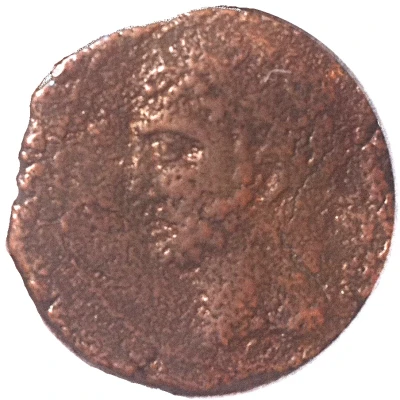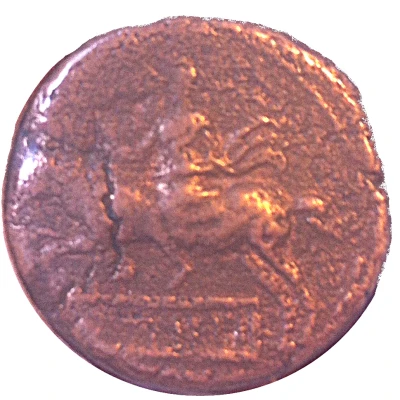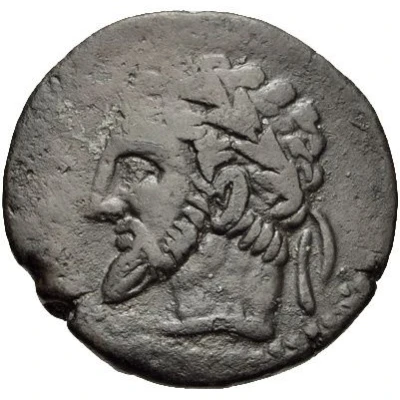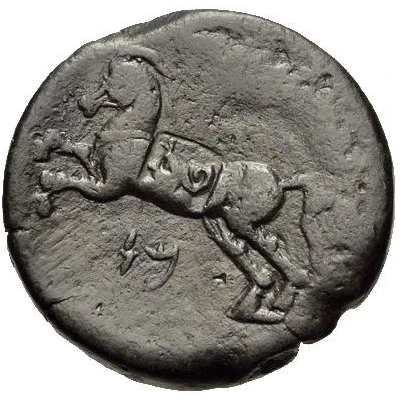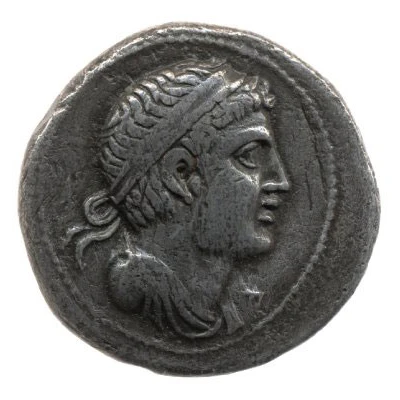
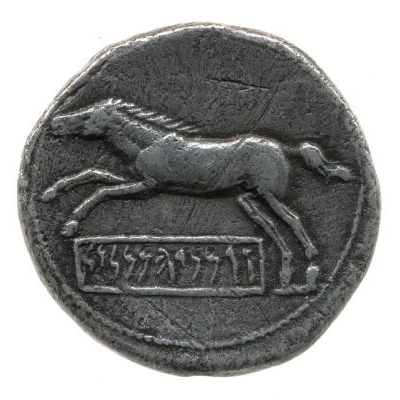

© British Museum
Tetradrachm - Vermina 203 BC - 202 BC
| Silver | 14.53 g | 26 mm |
| Issuer | Numidia |
|---|---|
| King | Vermina (203 BC - 202 BC) |
| Type | Standard circulation coin |
| Years | 203 BC - 202 BC |
| Currency | Western Numidia under the Masaesyli (cca. 300 BC-203 BC) |
| Composition | Silver |
| Weight | 14.53 g |
| Diameter | 26 mm |
| Shape | Round (irregular) |
| Technique | Hammered |
| Orientation | Medal alignment ↑↑ |
| Demonetized | Yes |
| Updated | 2024-10-10 |
| Numista | N#110832 |
|---|---|
| Rarity index | 95% |
Reverse
Free horse galloping left; below, framed punic lettering.
Lettering: ורמנד הממלכת
Translation: Urmnd Hammamleket (King Vermina)
Edge
Gross
Comment
Vermina, son of King Syphax, was himself king of the Massaessyles who occupied Western Numidia, whose capital Siga is the place of discovery of a number of coins of the two sovereigns.At that time, Western Numidia was not yet a Moorish kingdom, and had common borders with Mauretania Tingitana following the Tafna stem, crossing the current Tlemcen wilaya. The Moors did not enter Western Numidia until around 105 BC when Bocchus Ist handed over to the Romans his son-in-law Jugurtha, son of Mastanabal and adoptive son of Micipsa; almost 100 years after the reign of Vermina.
The limited information currently available about Vermina makes the dating of this currency complex. The strike could be placed between 203 BC, with its accession to the throne, and probably a date around 160 BC.
This type has been struck by an uncertain mint, which could eventually be Siga.
Interesting fact
The Tetradrachm - Vermina coin from Numidia, made of Silver and weighing 14.53g, is interesting because it features a unique blend of Greek and African influences in its design. The coin's obverse side features the image of a king, likely Vermina, with a Greek-style wreath around his head, while the reverse side depicts a horseman and a lion, which are common motifs in African art. This blending of cultural styles reflects the rich cultural diversity of Numidia, a region in North Africa that was influenced by both Greek and African cultures during this time period.
